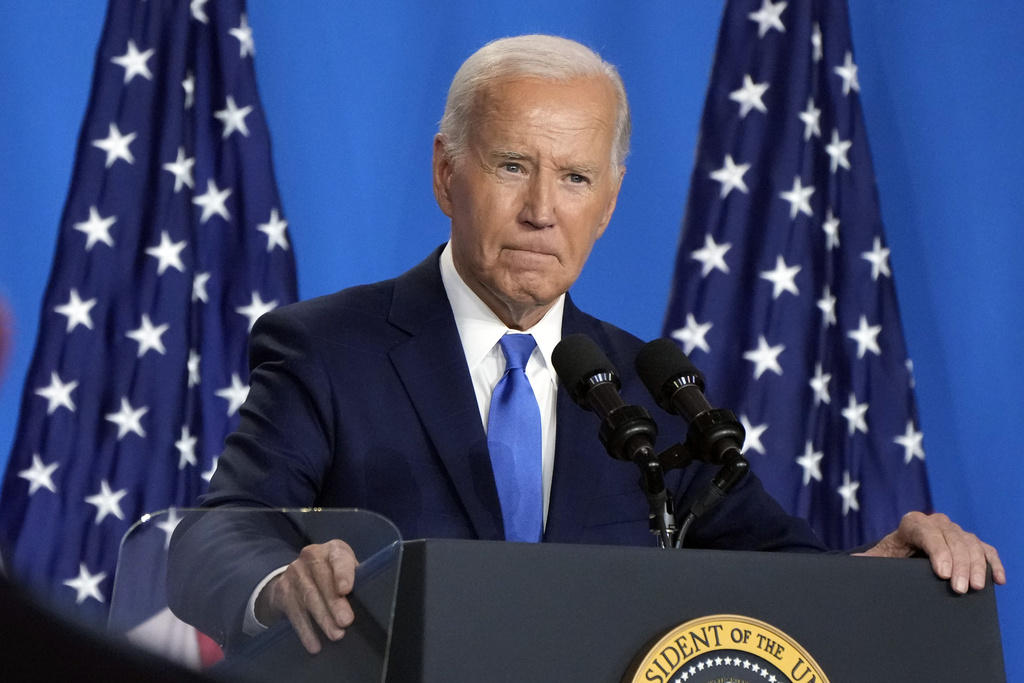There was a time when the subject of nuclear weapons was so consequential to international peace that it could bring even the most intense adversaries into the same room. Increasingly, it feels that this time has passed.
On July 17, China announced that it was suspending arms control talks with Washington, which will cause only more consternation in the Pentagon as Beijing is projected to increase its nuclear arsenal to more than 1,000 warheads by 2030. U.S.-Russia arms control talks are as far off as they’ve ever been, with Russian officials threatening to deploy more nuclear missiles closer to NATO territory in retaliation for future U.S. deployments of long-range, ground-launched missiles into Germany.
Meanwhile, President Joe Biden’s administration has adopted new nuclear guidance to ensure Washington is better prepared to deal with nuclear adversaries Russia, China and North Korea simultaneously.
U.S. attempts to name and shame China and Russia to reenter arms control talks amount to theater. Deploying more intermediate-range missile systems to Europe or Asia is likely to compel China and Russia to pour even more resources into their own strategic weapons systems.
This isn’t the first time Washington and Moscow have gone through this situation. During the four-decade-long Cold War, the United States and the Soviet Union were locked in multiple nuclear-laced standoffs — the dueling nuclear tests of the 1950s, the 1962 Cuban Missile Crisis and the Euromissiles crisis in the early 1980s, to name a few. Yet at critical moments, both knew when to step back from the brink, if only because the alternative — arms racing and potential calamity — was too terrifying to imagine. John F. Kennedy and Nikita Khrushchev signed the Limited Test Ban Treaty in 1963. Richard Nixon and Leonid Brezhnev finalized the Anti-Ballistic Missile Treaty in 1972. And in 1987, Ronald Reagan and Mikhail Gorbachev signed the Intermediate-Range Nuclear Forces Treaty after years of intense negotiations.
A little nuclear pressure
The difference between then and now, however, is stark. During the Cold War, the nuclear superpowers were willing to silo nuclear arms issues even when other disputes — the division of Europe, Soviet pressure on Poland and the wars in Angola, Afghanistan and Central America — brought the two into systemic rivalry.
Today, there is no siloing. Instead, Russia and China are leveraging their nuclear weapons programs to extract U.S. concessions on unrelated issues. Russian Foreign Minister Sergey Lavrov has repeatedly ruled out a return to United States-Russia nuclear talks due to Washington’s ongoing military support to Ukraine. China is equally emphatic that nuclear talks with Washington can’t go forward unless the United States stops exporting weapons to Taiwan.
The Biden administration is frustrated by the linkage. But it shouldn’t be surprised. Nuclear weapons are not only a matter of prestige for Moscow and Beijing but also a tool to pressure the United States into acceding to their demands. While some may be amenable to cutting off weapons shipments to Ukraine, doing the same with respect to Taiwan is a nonstarter in U.S. policy circles. If the price for arms control negotiations with Russia or China is a fundamental reorientation of U.S. foreign policy, then Washington is likely to avoid dialogue.
Can the United States do anything to keep the door to dialogue open? Yes, but it will require some hard choices on Washington’s part.
For starters, the United States could reverse its decision to station long-range U.S. missiles in Germany by 2026. This turnaround is less radical than it may appear. While bringing more missiles into Central Europe will give more reassurance to NATO allies about U.S. intentions, it won’t appreciably strengthen NATO’s deterrence vis-à-vis Russia. NATO has been deterring Russia for decades and retains more than enough military capacity to defend its member states without these new missile deployments.
Making trade-offs
Additional reassurance on Washington’s part are also unnecessary. NATO’s Article 5 mutual defense clause has been remarkably successful. Even as Russia has unleashed a war in Ukraine, it avoids actions — such as striking NATO weapons convoys into Ukraine — that could be construed as an armed attack on the alliance.
The notion that Russia would pick a fight with NATO at a time when its own poor military performance in Ukraine has been exposed for the entire world to see is difficult to believe. In fact, a deeper U.S. security posture in Germany could even be counterproductive by discouraging European states from investing in their own defense capability over the long term. Stopping these missile deployments would signal to Russia that the United States is at least willing to do its part to create an environment favorable for talks, all without compromising NATO’s power.
Getting China back to the table will be trickier. The nuclear disparity between the United States and China remains lopsided in Washington’s favor, which means Beijing may be unwilling to enter a discussion until the warhead gap closes.
Even so, it costs nothing for Biden to reiterate to Xi directly that the core tenets of U.S. policy on Taiwan — opposition to Taiwan’s independence, support for a peaceful resolution of cross-strait disputes and opposition to unilateral changes to the status quo — are the same today as they were when the United States normalized diplomatic relations with China in 1979. The United States could also go a step further by formally denouncing “strategic clarity” as a U.S. policy option, which would disabuse Taiwan that a formal U.S. defense guarantee is in the offing and lower China’s concerns about U.S. intentions.
Reagan and Gorbachev’s famous quote that “a nuclear war cannot be won and must never be fought” remains relevant today. Strategic stability with the world’s top powers is still possible, even if it requires trade-offs along the way.
Daniel DePetris is a fellow at Defense Priorities and a foreign affairs columnist for the Chicago Tribune. ©2024 Chicago Tribune. Distributed by Tribune Content Agency.
